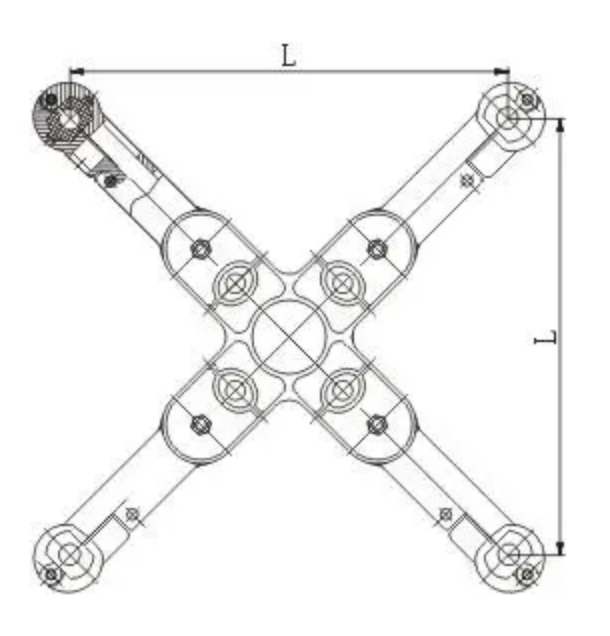Spacer Damper - JZX4 Cross Type
The JZX4 cross type spacer damper is a type of fitting that is installed on split conductors to maintain a fixed distance between them. Its purpose is to prevent the conductors from colliding with each other and to minimize vibration caused by wind or sub-gap. The spacer is typically installed in the middle of the span, with one spacer installed at intervals of 50-60m. The spacer rods are available in two-split, four-split, six-split, and eight-split conductor configurations. When comparing the vibration amplitudes of conductors with and without spacer rods, it has been observed that the two-split conductor experiences a 50% reduction in vibration, while the four-split conductor experiences reductions of 87% and 90%.
Function
The spacer damper is a crucial component in electric power fittings and is widely used in transmission lines. Its demand in production is also on the rise. The spacer damper plays a vital role in preventing whipping between conductors and reducing conductor vibration caused by wind. It functions similarly to a vibration damper but primarily focuses on minimizing vibration between spans.
Technical Requirement
The primary requirement for the spacer is that the clamp must have a secure grip and remain firmly in place during long-term operation. It should also possess sufficient overall strength to withstand the centrifugal force of each split conductor during short-circuit conditions and endure fatigue caused by long-term vibration. In terms of performance, spacers can be categorized as either damping or rigid. Damping spacers have moving parts embedded with wear-resistant rubber pads. These rubber pads act as dampers, absorbing the vibration energy of the conductor and effectively reducing conductor vibration. On the other hand, rigid spacers, without rubber pads, are typically used in areas where vibration is unlikely to occur or for jumper spacers, as they do not possess the same vibration absorption capabilities.
Model Specification
Model | Applicable wire range (mm) | Main size (mm) | Weight (kg) |
JZX4-45300 | 23.0-24.5 | 450 | 7.5 |
JZX4-45300J | 24.5-26.0 | 450 | 7.5 |
JZX4-45400 | 26.0-28.0 | 450 | 7.5 |
JZX4-45400J | 28.1-29.5 | 450 | 7.5 |
JZX4-45500G | 30 | 450 | 8.2 |
Images



Q&A
Q1: How Can I Obtain The Right Price?
A1: Based on your requirements, we will suggest suitable products and request information on the specific quantity you plan to purchase. If you desire customized products, please provide us with the necessary drawings. We will promptly assist you in acquiring competitive prices.
Q2: Can I Request A Sample?
A2: Certainly, but kindly note that we do charge a sample fee and shipping costs.
Q3: How Long Does It Take To Produce?
A3: Typically, it takes around 2-3 days to prepare a sample after receiving the sample fee. The lead time for mass production varies between 7 and 40 days, depending on inventory availability and the quantity ordered.
Q4: What Is The Minimum Order Quantity(MOQ)?
A4: Most products are over 1000, and welcome you to inquire.




















